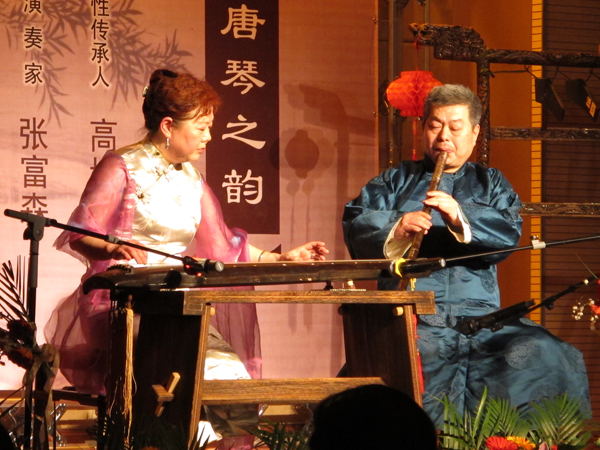

 |
|
Gao Peifen, the fifth-generation inheritor of the Zhucheng guqin school, promotes the traditional Chinese art form, along with her husband, Zhang Fusen. Provided to China Daily |
On June 8, China's Eighth National Cultural Heritage Day, music many people thought had disappeared centuries ago was played in the Forbidden City.
The music was from a guqin, a seven-stringed plucked instrument with a history of some 4,000 years. The player was Gao Peifen, 59, the fifth-generation representative inheritor of the Zhucheng School - one of China's best-known guqin schools.
Gao and her disciples performed songs that the guqin master has painstakingly recovered from ancient scores that were almost lost forever.
Gao says the guqin's arched wood surface represents heaven, and its flat bottom represents earth. In Chinese measurement the standard length of a guqin is 3 chi, 6 cun and 5 fen (about 1.22 meters), representing the 365 days of a year.
The 13 dots on the surface, named hui, mark the positions of the 91 harmonics on the seven strings. They represent the 12 months of a year, plus a 13th month every two or three years as per the lunar calendar.
The most unique aspect, however, is its notation. Called Jianzipu, the notation solely designed for guqin is a combination of written Chinese characters and numbers, which indicate plucking techniques and finger positions.
The tablature, which can only be read by guqin players, was once described as "the book from heaven" in A Dream of Red Mansions, the classic Chinese novel from the Qing Dynasty (1644-1911).
The notation only indicates the notes, not the rhythm. To make the scores playable, therefore, there is a special procedure called "dapu", meaning to compose the rhythm of a guqin song.
"The procedure of dapu requires a guqin artist's profound knowledge of the instrument as well as years of study to the school characteristics," says 90-year-old Zheng Minzhong, scholar of the Palace Museum.
| Voice of tradition |



